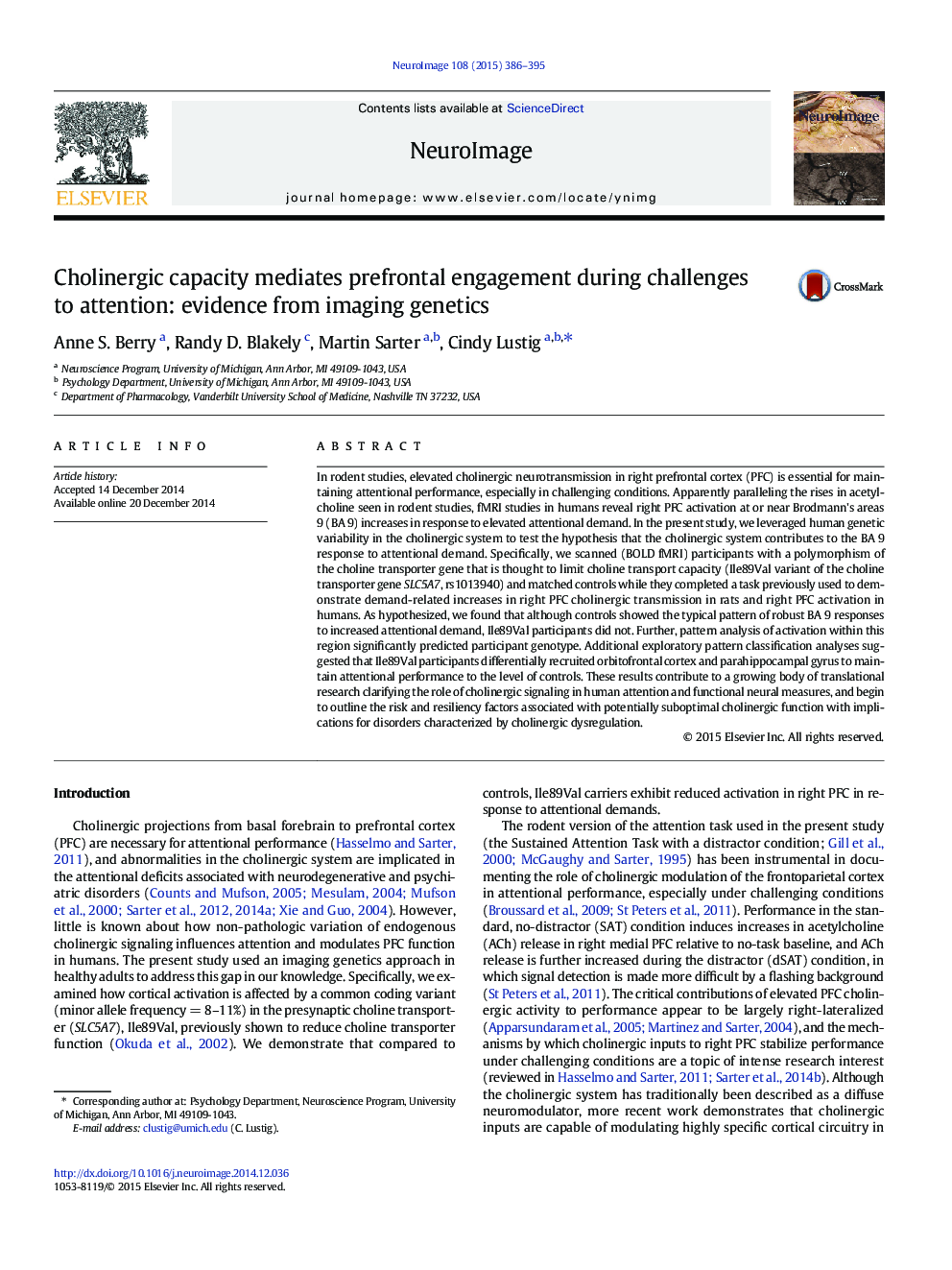| Article ID | Journal | Published Year | Pages | File Type |
|---|---|---|---|---|
| 6025926 | NeuroImage | 2015 | 10 Pages |
Abstract
In rodent studies, elevated cholinergic neurotransmission in right prefrontal cortex (PFC) is essential for maintaining attentional performance, especially in challenging conditions. Apparently paralleling the rises in acetylcholine seen in rodent studies, fMRI studies in humans reveal right PFC activation at or near Brodmann's areas 9 (BA 9) increases in response to elevated attentional demand. In the present study, we leveraged human genetic variability in the cholinergic system to test the hypothesis that the cholinergic system contributes to the BA 9 response to attentional demand. Specifically, we scanned (BOLD fMRI) participants with a polymorphism of the choline transporter gene that is thought to limit choline transport capacity (Ile89Val variant of the choline transporter gene SLC5A7, rs1013940) and matched controls while they completed a task previously used to demonstrate demand-related increases in right PFC cholinergic transmission in rats and right PFC activation in humans. As hypothesized, we found that although controls showed the typical pattern of robust BA 9 responses to increased attentional demand, Ile89Val participants did not. Further, pattern analysis of activation within this region significantly predicted participant genotype. Additional exploratory pattern classification analyses suggested that Ile89Val participants differentially recruited orbitofrontal cortex and parahippocampal gyrus to maintain attentional performance to the level of controls. These results contribute to a growing body of translational research clarifying the role of cholinergic signaling in human attention and functional neural measures, and begin to outline the risk and resiliency factors associated with potentially suboptimal cholinergic function with implications for disorders characterized by cholinergic dysregulation.
Related Topics
Life Sciences
Neuroscience
Cognitive Neuroscience
Authors
Anne S. Berry, Randy D. Blakely, Martin Sarter, Cindy Lustig,
